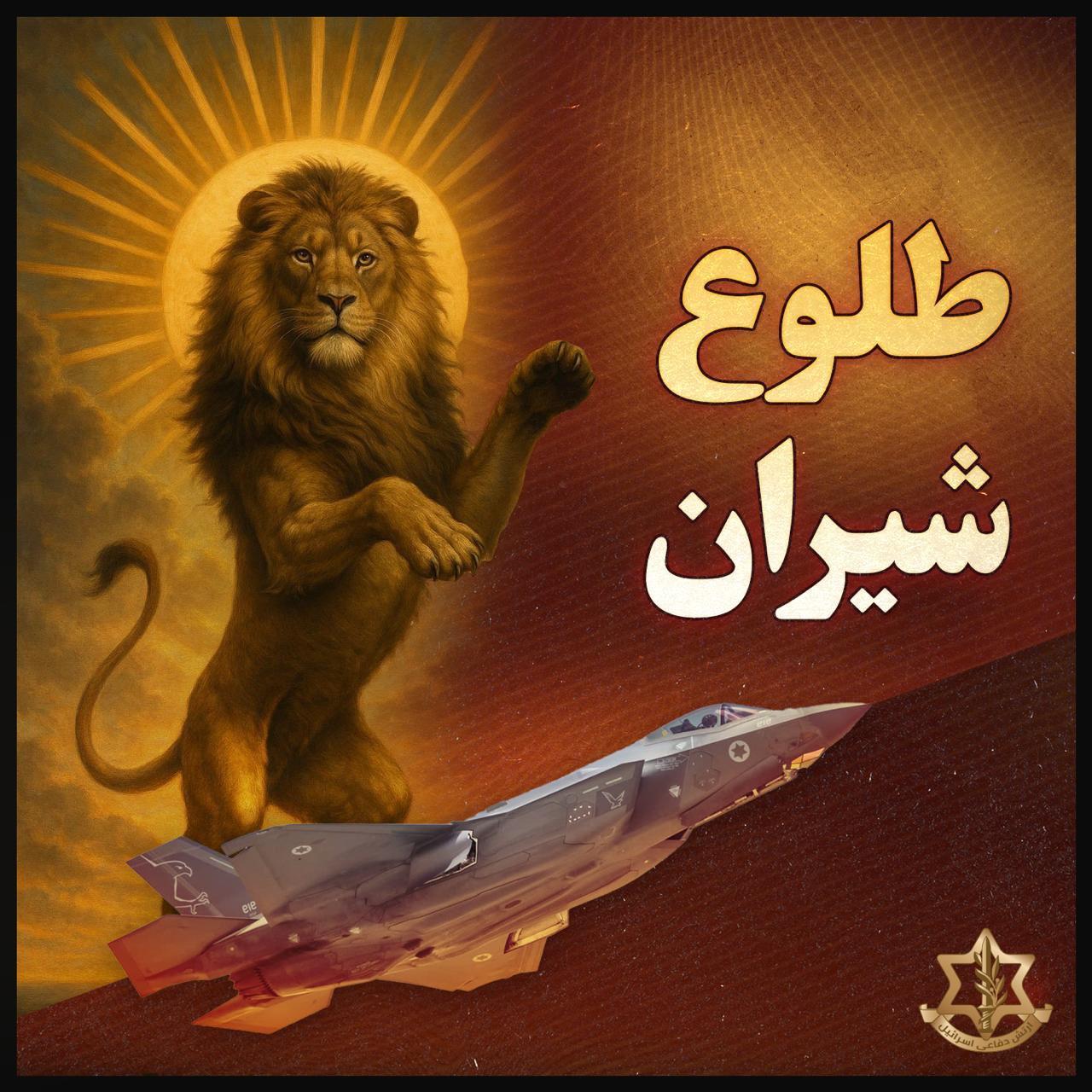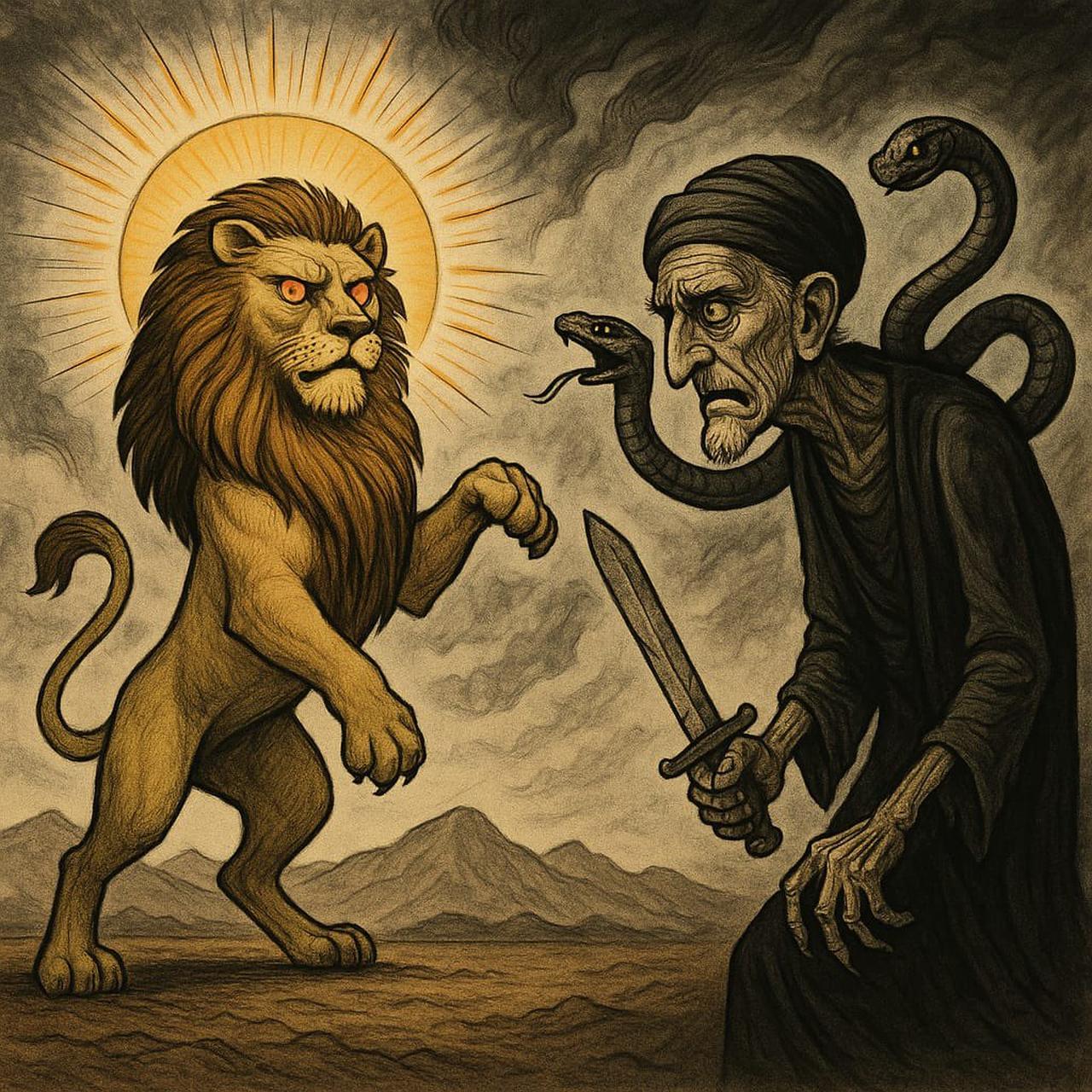
Israel ramped up its Persian-language messaging across official social media channels shortly after launching attacks on Iran on June 13, according to reports by BBC Monitoring.
These channels have begun broadcasting dramatic imagery rich in historical symbols and references, clearly targeting the Iranian audience. Posts on official Israeli accounts—particularly those in Persian, run by the IDF and the Foreign Ministry—often adopt a symbolic tone and rely heavily on imagery rich symbolism. This stands in stark contrast to their Hebrew-language counterparts, which typically focus on official statements and tactical updates.
The Israeli government has long maintained an active presence on Persian-language social media. Its official account on X , operated by the Foreign Ministry, was launched in 2010 and now boasts over 600,000 followers.
During mass protests in Iran in 2022, the account ramped up its activity, specifically targeting anti-regime voices on Twitter.
In addition to its presence on X, the 'Israel in Persian' account also operates an active Telegram channel with around 600,000 subscribers and an Instagram page followed by nearly two million users—two of the most popular social media platforms among Iranians.
The IDF’s Persian-language account on X, launched in 2019 and followed by around 100,000 users, has also been active—particularly since the start of the current war.
The Israeli government’s Persian-language messaging on social media has heavily relied on historical symbols such as the lion and sun—imagery rich with deep political and cultural significance in Iran.
These symbols were part of Iran’s official emblem during the Shah’s reign, before the 1979 Islamic Revolution. Israel's revival of this imagery today appears to be an attempt to project strength and dominance, while appealing to segments of the Iranian public opposed to the current regime.
The lion-and-sun symbol also carries biblical connotations. On the eve of Israel’s strike on Iran, Prime Minister Benjamin Netanyahu placed a note in the Western Wall that read: “A nation rises like a lioness, it lifts itself like a lion”—a reference to the words of the prophet Balaam, who intended to curse the Israelites but whose curse turned into a blessing. (The full passage continues: “It does not lie down until it devours the prey and drinks the blood of the slain.”)
Official Israeli accounts have repeatedly shared the pre-revolution Iranian flag and associated imagery, seemingly aimed at anti-regime Iranians—particularly monarchists, most of whom live outside Iran.
Over the past few years—and especially since the start of the war in Gaza—many Iranian social media users affiliated with the monarchist movement and supporters of Reza Pahlavi, the exiled son of the last Shah, have shown notable support for Israel. This includes other regime opponents as well.
Some monarchists are also part of the Iranian Jewish community, residing either in Israel or abroad, and often express strong hostility or criticism toward the current Iranian regime.


In one example, the IDF’s Persian-language account posted an image of a lion standing atop a U.S. F-35 fighter jet, backlit by a shining sun, to announce the launch of “Operation Rising Lion,” the codename Israel gave its military campaign against Iran on June 13. Since then, multiple versions of this image have been widely circulated.
In addition to featuring F-35 jets, other posts included an image of a bald eagle carrying Israeli flags on its wings—an overt attempt to demonstrate the strong support Israel receives from the United States.
Another post on the “Israel in Persian” account showed a lion destroying the Islamic Republic’s emblem, accompanied by the caption: “The uprising of the lions for the triumph of light over darkness.”
This symbolism was paired with sharp, direct messages. In one video posted by the “Israel in Persian” account, an Israeli military official is seen patting a missile, with the caption: “We will not allow the world’s most dangerous regime to acquire the world’s deadliest weapon."
An analysis conducted by BBC Monitoring on Israeli Persian-language messages revealed a significant increase in the number of posts since Israel launched its attacks on Iran on June 13, particularly in the volume of images shared.
Engagement with these posts also surged, with many receiving thousands of shares and likes, reaching millions of users.
However, it remains difficult to determine whether these posts are effectively reaching the target audience, given that the X platform (formerly Twitter) is banned in Iran, and many users rely on virtual private networks (VPNs) to access it.
Some users interacting with the posts use profile pictures featuring the Israeli flag or the pre-revolution Iranian flag, and engage in Hebrew, English, and Persian.
Despite the challenge in measuring the direct impact of Israeli messages, the marked increase in posts clearly signals Israel’s intent to reach Persian speakers by invoking historical ties and appealing to regime opponents.